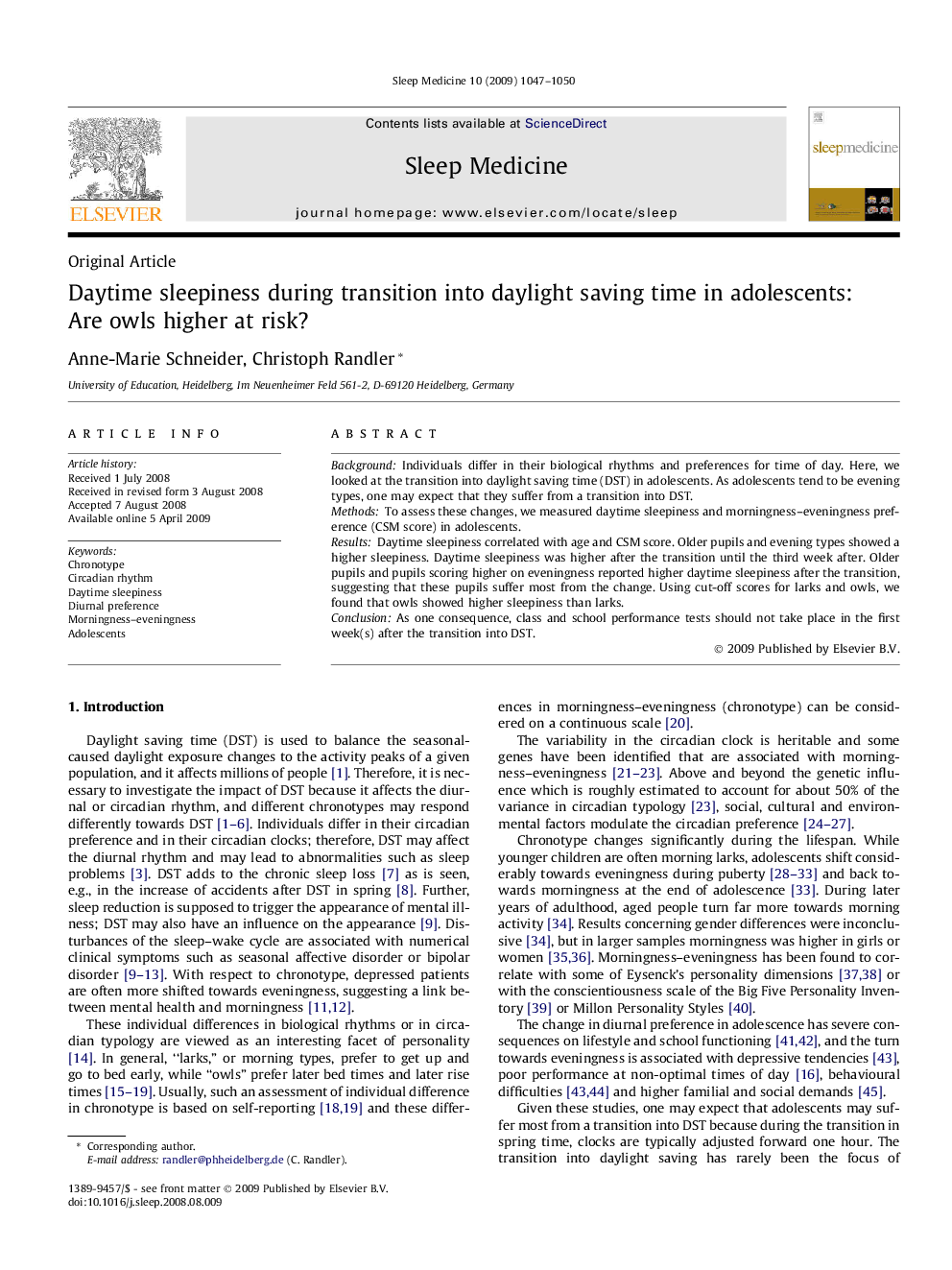| کد مقاله | کد نشریه | سال انتشار | مقاله انگلیسی | نسخه تمام متن |
|---|---|---|---|---|
| 3177275 | 1200293 | 2009 | 4 صفحه PDF | دانلود رایگان |

BackgroundIndividuals differ in their biological rhythms and preferences for time of day. Here, we looked at the transition into daylight saving time (DST) in adolescents. As adolescents tend to be evening types, one may expect that they suffer from a transition into DST.MethodsTo assess these changes, we measured daytime sleepiness and morningness–eveningness preference (CSM score) in adolescents.ResultsDaytime sleepiness correlated with age and CSM score. Older pupils and evening types showed a higher sleepiness. Daytime sleepiness was higher after the transition until the third week after. Older pupils and pupils scoring higher on eveningness reported higher daytime sleepiness after the transition, suggesting that these pupils suffer most from the change. Using cut-off scores for larks and owls, we found that owls showed higher sleepiness than larks.ConclusionAs one consequence, class and school performance tests should not take place in the first week(s) after the transition into DST.
Journal: Sleep Medicine - Volume 10, Issue 9, October 2009, Pages 1047–1050